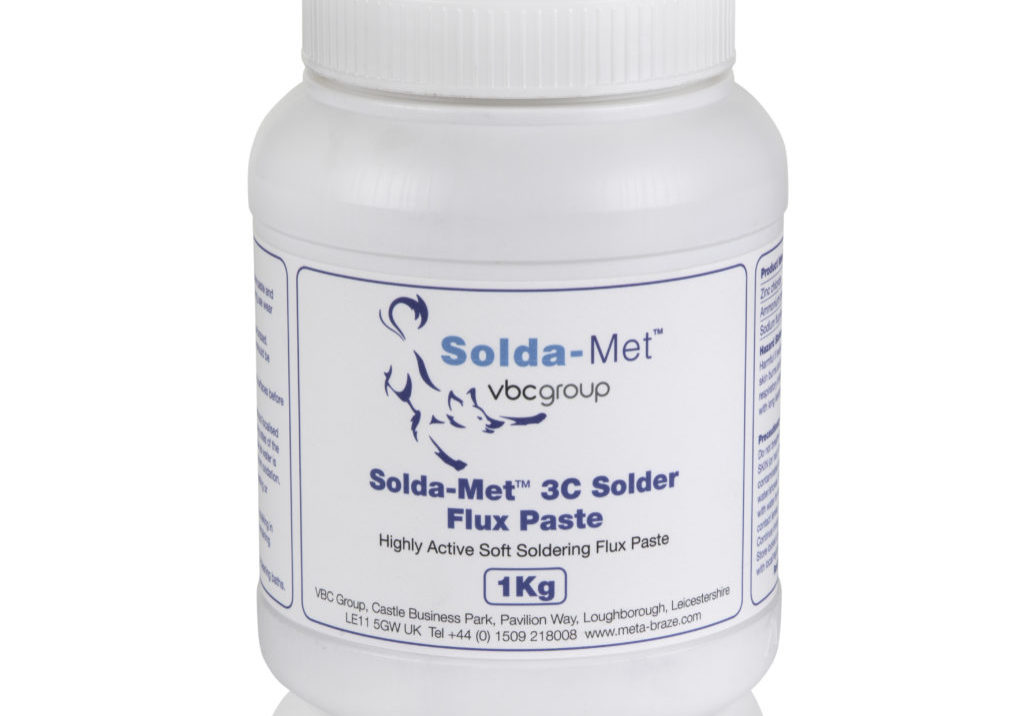Key advantages of brazing (& soldering) with paste
There are a number of benefits associated with brazing and soldering with paste over other types of braze and solder media such as preforms.
Brazing with paste lends itself in particular to fully-automated high production environments but also to lower production semi-automated processes. That said, it is perfectly possible to achieve sound and economically brazed joints using a braze paste in conjunction with manual brazing methods, particularly if induction heating is being employed.
Braze paste consists of a filler metal, a flux (when brazing in air) and a specially formulated, proprietary binder system.
The filler metal powder is finely atomised to tightly controlled specifications on particle size (and sometimes shape as well), melting range and compatibility with the base metals being joined.
The filler metal powder is mixed with a fluxed binder (when brazing in air) or a fluxless binder system (for brazing under atmosphere or in a vacuum).
The function of the fluxing agent is to remove surface oxides from the joint and the joint area during heating and to prevent their reformation as well as to remove and prevent oxides from reforming on the particles of the filler metal powder themselves.
(There is not usually a requirement for flux when components are being brazed under atmosphere or in a vacuum although there are benefits occasionally to be gained from a minimal addition of flux).
The function of the binder system is to hold the flux and filler metal in suspension and to prevent any interaction between the filler metal and the flux.
Paste is very versatile in that there are a number of fluxed binder systems that can be used in combination with different alloys to meet specific temperature ranges and brazing processes.
Some of the key advantages to brazing with paste over other forms of braze media are:
- Many of the performance characteristics can be controlled, for example –
The paste can be adjusted for viscosity according to joint geometry, heating method, brazing process and dispensing requirements
- The viscosity can also be adjusted to reflect the operational demands of production – for example paste can be pre-applied to a production batch of components with multiple joints that may have to wait for a number of hours before being brazed – the ‘cold flow’ of the paste (i.e. how far the paste runs along or around a joint, whether horizontal or vertical, before stopping) can be precisely controlled by way of modifying its viscosity and without changing any other of its brazing characteristics
- The size of the filler metal powder particles can be adjusted to suit the specific application and the selected dispensing method
- The ratio of metal to binder (metal content) can be precisely controlled to meet the requirements of the individual application and to ensure the best balance is achieved between cost and performance
- The flux is incorporated into the paste so the need for pre-fluxing of the component is eliminated resulting in a one-stage as opposed to a two-stage process
- Flux characteristics and the flux to alloy ratio of the paste are tightly controlled, fixed and manufactured to meet the specific requirements of the individual application and the heating process being employed. The quantity of flux being used is therefore consistent and not subject to the individual interpretation of single or multiple operators
- The use of timed dispensing systems allied to the fixed flux to metal ratio of the paste results in the precise, consistent and measured application of the braze paste to the joint area in a single step. This can lead to a more consistent and high quality brazed joint resulting in lower costs due to reduced re-work and/ or scrapped parts
- The controlled amounts of flux in the paste coupled with the accurate and precise application of the paste to the joint area and the consistent and repeatable size of paste deposit results in the minimum of flux residue after brazing
- Paste can be supplied in many different packaging alternatives from small 10gr syringes to 100gr machine cartridges, 1Kg semco cartridges up to machine mounted paste tanks with sufficient capacity for a complete shift on a fully automated brazing machine
- Most other forms of braze media such as preforms are part-specific with each joint requiring its own engineered shape and volume. This often carries up-front engineering costs and whilst there are certain clear advantages to preforms, paste products are more generic and very often can be used on joints that are differently configured and on multiple different parts. Under these types of situation, stock-keeping and stock control can be significantly simplified and costs reduced
- Some of the more commonly used types of paste applicator in use include –
- Squeeze bottles (which are the most basic and least recommended application method)
- Pneumatic dispensers whereby an air pressure system attaches to a syringe or cartridge filled with paste and by which the size of deposit is controlled by adjusting air pressure, needle size and the duration of the air pressure cycle
- Positive displacement by which paste is purchased in bulk in pots or buckets and subsequently transferred to a pressurized paste reservoir or tank. The paste is fed into an applicator gun through positive displacement and the gun (which can be fitted with multiple nozzles) delivers precise deposits of paste into the joint area either as a dot or a stripe

